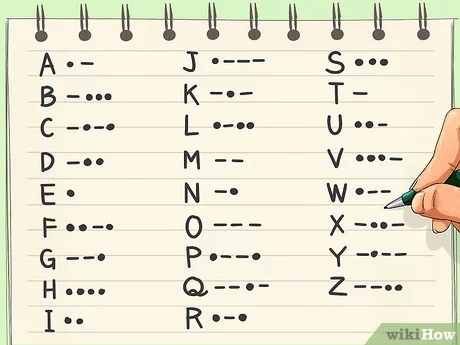A Morse code decoder device is an electronic device that converts Morse code signals into written text or other forms of communication. The device uses a series of algorithms and techniques to recognize the patterns in the Morse code signal and translate it into a legible format. Here's a general overview of how a Morse code decoder device works:
- Signal Input: The Morse code signal is inputted into the decoder device through various means, such as a microphone, keyboard, or serial port. The signal can be in the form of audio, radio frequency (RF) waves, or digital data.
- Preprocessing: The input signal goes through preprocessing stages to clean up noise, remove interference, and enhance the signal-to-noise ratio. This step may involve filtering, amplification, and thresholding.
- Symbol Recognition: The preprocessed signal is then analyzed using various techniques to identify the individual symbols within the signal. This can be done by comparing the signal pattern to a set of known Morse code patterns or by using machine learning algorithms to recognize the patterns.
- Timing Analysis: Once the symbols are identified, their timing information is extracted and used to determine the spacing between symbols, which is essential for accurate decoding.
- Decoding: With the symbol timing information, the decoder device applies a set of rules to convert the Morse code symbols into letters, numbers, or other characters. This process involves mapping each symbol to its corresponding character according to the Morse code chart.
- Output: The decoded message is displayed on a screen or printed on paper, depending on the type of decoder device being used. Some devices may also provide auditory feedback or transmit the decoded message over a network.
- Error Correction: To ensure accuracy, some Morse code decoder devices employ error correction techniques, such as checking for invalid sequences or requesting confirmation from the operator.
- Advanced Features: Depending on the sophistication of the decoder device, additional features like speed adjustment, tone control, and memory recall may be available. These features help operators customize the decoding experience and improve the accuracy of the translation.
- Power Source: Most modern Morse code decoder devices rely on electricity or batteries for power. However, there are also manual decoders that do not require any external power source.
In summary, a Morse code decoder device translates Morse code signals into human-readable text or other formats by processing the signal through various stages, including preprocessing, symbol recognition, timing analysis, decoding, output, error correction, advanced features, and








